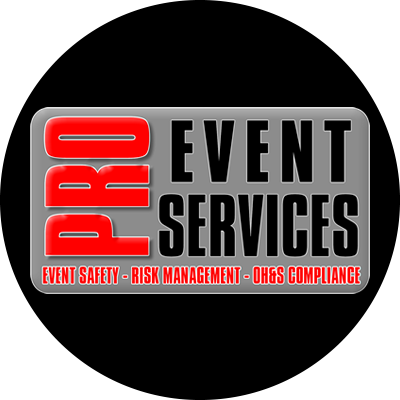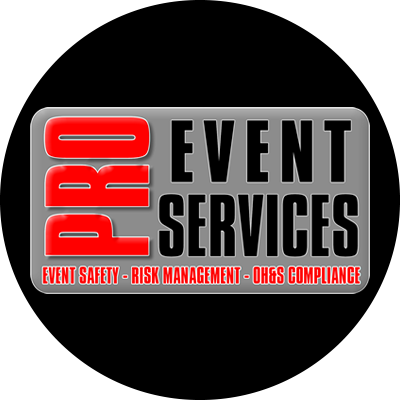Title Page
-
Trading Name:
-
Event Name:
-
Completed by:
-
Date of inspection:
-
Location:
-
Document No:
Registration
-
Proprietor Name:
-
Premises Type:
-
Is the trader registered with Streetrader and is a 'Statement of Trade' available ?
-
What is the Traders registration number:
-
Does the food trader have another form of registration (Interstate) and is it available ?
-
Provide details of the registration and ensure that the registration is current
-
If the Food Trader is selling ‘high-risk’ or ‘potentially hazardous' food or is unable to provide registration details consideration should be given to suspending them from trading.
-
What is the classification of the business
-
All Class 2 Food Traders must have a nominated Food Safety Supervisor - Does the Trader have a nominated Food Safety Supervisor ?
-
Food Safety Supervisor Name:
-
Class 2 food premises are required by law to have a food safety supervisor. The Food Safety Supervisor is responsible for food safety in your business and needs to have a good knowledge of food safety, have the ability to supervise food handlers, and have the authority to give directions if unsafe food practices are observed.
Your food safety supervisor does not need to be on site each time you trade. You will also need to make sure that they have trained your other staff to recognise food safety risks and ensure that the food they are preparing or selling is safe. -
All Class 2 Food Traders must have a Food Safety Plan - Does the Trader have a Food Safety Plan and is it available ?
-
Photo of Food Safety Plan is required.
-
Class 2 premises are required by law to have a Food Safety Program. This is a written plan that shows how your business will manage the safety of the food you sell. If your business is required to have a Food Safety Program it must be in place before you start trading.
Food Premises or Vehicle
-
Is the Food Trader's premises/vehicle registered and is a registration certificate available ?
-
Registration Number or name of Registering Authority
-
If the Food Trader is a Class 2 (sells ‘high-risk’ or ‘potentially hazardous' food) business registration is required in most jurisdictions including Victoria.
-
Is any cooking conducted by the Food Trader ?
-
Is LP Gas being used ?
-
Has the Food Trader completed an Energy Safe Victoria (ESV) Checklist and is it available ?
-
Photo of completed checklist is required.
-
The Safety Officer should also complete the checklist "Gas Safety Checklist (Victoria)"
-
It is a requirement that all Food Traders using LP Gas complete the ESV Checklist, this must be completed by the Food Trader or Safety officer PRIOR to the commencement of the event !
Complete the audit titled 'Gas Safety at Public Events Checklist'.
Fire Safety
-
Does the Food Premises or Vehicle have a Fire Extinguisher ?
-
Is the fire extinguisher correctly mounted, the correct type for the risk and been tagged within the last six (6) months ?
-
Provide a photo of the installation
-
Describe the issue and the steps required to meet compliance.
-
All food premises or vehicles where cooking or LPG are being used require an appropriate fire extinguisher to be provided.
-
Does the Food Premises or Vehicle have a Fire Blanket ?
-
Is the fire blanket correctly mounted and been tagged within the last six (6) months ?
-
Provide a photo of the installation
-
Describe the issue and the steps required to meet compliance.
-
All food premises or vehicles where cooking or LPG are being used require an appropriate fire blanket to be provided.
-
Are hand washing facilities available and provided with soap and hand towel ?
Food Allergens
-
The Australian New Zealand Food Standards Code states food businesses must advise customers of eight allergens in food, either on the package of a food or on request by the customer.
These are: 1. Cereals and products containing gluten - wheat, rye, barley, oats, spelt, and kamut, and their hybrid strains, 2. Crustaceans such as crabs, lobster, shellfish, and their products, 3. Egg and egg products, 4. Fish and fish products, 5. Milk and milk products, 6. Nuts, such as tree nuts, almonds, hazelnuts, walnuts, cashews, peanuts, pecan nuts, brazil nuts, pistachio nuts, macadamia nuts, sesame nuts, and their products, 7. Soybeans and their products, 8. Added sulphites levels of 10mg/kg or more. -
Is information about food allergens available to patrons ?
-
Is food prepared to avoid the cross contamination of food allergens ?
General
-
Are egress paths clear of stock/rubbish ?
-
Are all electrical items tested and tagged in accordance with AS/NZS 3760 ?
-
Are control measures in place to restrict access to back of house (BOH) areas ?
-
Is a first aid kit available and is it correctly stocked ?
Food Storage & Preparation
-
Is the food premises or vehicle maintained in a clean and tidy condition
-
Are food preparation surfaces properly cleaned and sanitised before every use ?
-
Is food preparation and storage equipment properly cleaned and sanitised before every use ?
-
Are cleaning products labelled and stored correctly ?
-
Are Safety Data Sheets (SDS) available for all chemicals ?
-
Safety Data Sheets (SDS) must be provided for all chemicals used and stored onsite.
-
Are 'use by' or 'best before' dates checked and the oldest items used first ?
-
High risk or potentially hazardous foods must be stored correctly to reduce the risk of bacterial contamination, these foods include – meat, poultry, dairy, seafood, eggs, smallgoods and cooked rice and pasta.
High risk or potentially hazardous foods must be kept refrigerated below 5 degrees Celsius or if frozen below -18 degrees Celsius.
Cooked food should be heated to a temperature over 75 degrees Celsius and then not allowed to drop below 60 degrees Celsius until served. -
Are high-risk or potentially hazardous foods stored correctly ?
-
Are storage temperatures checked and recorded ?
-
Are cooked foods maintained at a temperature above 60 degrees Celsius and sold or consumed within two (2) hours ?
-
Are storage temperatures checked and times monitored ?
-
Are refrigerated storage reefers in use and fitted with emergency warning alarm for persons trapped inside ?
Employees
-
Are employees well presented and wearing clean clothing/uniforms ?
-
Are hair ties/hair nets worn as required ?
-
Are gloves worn as required ?
-
Are employees trained (as required) in food safety, LPG cylinder connection, changeover and leak testing and the use of fire extinguishers and fire blankets ?
Licensed Premises
-
Does this outlet serve alcohol ?
-
Is the liquor license on display ?
-
Do employees have a Responsible Service of Alcohol (RSA) qualification ?
-
Are the "Under 18? No supply" and "Intoxicated? Drunk? Disorderly?" regulatory signs on display and clearly visible to the public ?
-
Is free drinking water available and the "Free water available in this venue" sign on display and clearly visible to the public ?
Checklist Sign Off
-
Additional comments:
-
Signature:
-
Report completed on:
Disclaimer
-
The assessors believe that the information contained within this report is correct at the time the inspection was completed. The assessors do not accept responsibility for any consequences arising from the use of the information herein.
This report is based on only those items that were checked during the day the inspection was completed and should not be relied upon as an exhaustive record of all possible risks or hazards that may exist or the potential improvements that can be made.,








